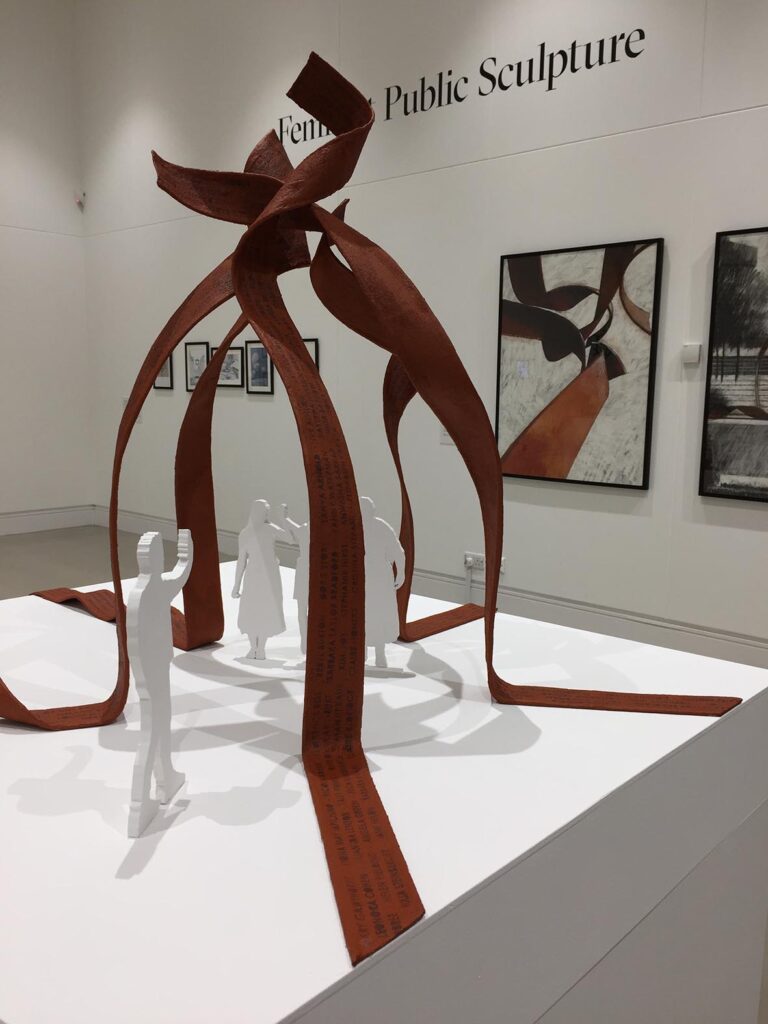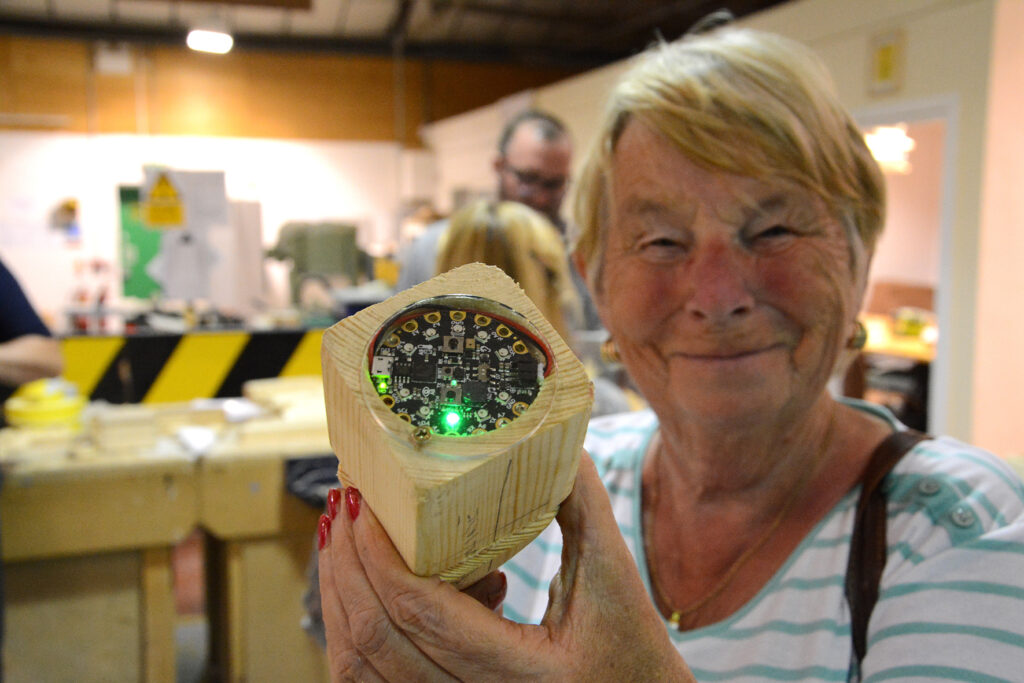
Introducing Pippa Hale, Artist
I was fortunate enough to encounter Pippa Hale’s work through the Special Interest Group’s case study of the project ‘Walking in Others’ Footsteps’ run by Mirador Arts, a highly active, charitable Community Arts Trust based in the North-West of the UK. The sub-project for which she was responsible was called ‘Skip, Play, Repeat’
‘Skip, Play, Repeat’ involved re-enacting street play activities of previous generations of children by recrafting the artefacts which were commonly used at the time. Children of all backgrounds from schools in Preston took part in outdoor events in which they learnt how to master the special skills demanded by the newly refashioned ‘toys’. But this was only the start. An extensive interview with Pippa for the case study and a visit to her website bore witness to the range of her creative vision and to the impact her recent work was having in the Leeds area.
Many professional artists who rely on commissions and externally funded cultural projects to further their contribution to community wellbeing find themselves constrained by the cutbacks in local government support, party political interests and the priority given to large scale economically driven projects which are dependent on the private sector. Other drawbacks are the limited timeframes of funded initiatives whose sustainability UK Research and Innovation and The Arts Councils have only recently begun seriously to address. And then there is the small matter of COVID 19.
How would leading artists such as Pippa survive the present crisis?
Her varied work in sculpture, installation, co-curation and infrastructural initiatives such as the establishment of prizes and new cultural venues was beginning to make real inroads into the Leeds environment. Like other self-driven, multi-talented, entrepreneurial artists with a strong sense of mission, she was clearly a core catalyst in the cultural renewal of the City. Her personal blog below gives a sense of the challenge facing her and others like her. It is an aspect of cultural literacy which will be explored in greater detail in subsequent entries on this site and elsewhere.
Pippa’s Blog
Cultural Literacy and Public Art in a Global Pandemic
Being an artist is a struggle at the best of times, but the Covid-19 global pandemic is having a devastating effect on the cultural sector, the ramifications of which will be felt for generations.
I’m a contemporary artist who works with heritage venues, galleries and in the public realm, making works that respond to the history, people and geography of places. Since having kids of my own, I’ve also become interested in play and its correlation to creativity. Projects are commissioned by local authorities, museums, private companies, educational institutions and arts agencies and have included works in sound, film, events, iron, found objects and foam. Sometimes the works are permanent, sometimes they are temporary, but the overall narrative is about rooting artworks to their location, connecting people to their history and place and each other.
Issues confronting artists working on public projects / What are main challenges professionals in my position have to face?
Being an artist, no matter what your practice, is a challenging career choice. Whilst it can be enormously rewarding, it necessitates incredible amounts of self-discipline, chutzpah, humility, persistence, resilience – not to mention creativity. At no time is this more true than when working in the public realm. Whereas galleries have experienced staff who support the presentation and dissemination of contemporary art, public art can be commissioned by multiple partners who perhaps haven’t worked with artists before.
The impetus to commission works of art for the public realm are varied, but are often political. Artists are often brought in at a time when places are undergoing change and artworks are commissioned to smooth the planning process or to sweeten local communities.

Maquette for Ribbons, a new sculpture celebrating women in Leeds Photograph: the Artist 
Hardwiring the tech on the tops and whips Photo: Darren Andrews, courtesy of Mirador Arts 
Participant with top and whip she’d handcrafted, hard wired and programmed Photo: Darren Andrews, courtesy of Mirador Arts
What kind of contribution does my work make to the ‘cultural literacy’ of communities?
One of the first things I do when working on a new commission is to connect with people in the local area. I never assume they have an interest in contemporary art, but I know they are passionate about the places in which they live and work. Talking to them is crucial when trying to get to know a new place as it builds up a personal picture of somewhere that is based on memory and local networks rather than the official stories recorded in regional archives. I can get a deeper understanding of how that community and its culture interact and it’s those conversations that ultimately inform the artwork.
At the end of the day, I’m making a new thing for that place, be it an object or an event, something that will simultaneously connect contemporary communities to the past and to current debate.
I believe good public art is essential because it reflects who we are as a society, our values and beliefs, our pasts and presents and adds depth and meaning to our cities, towns and villages. In recent weeks, public art has been at the forefront of contemporary debate with the toppling of memorial statues in Britain and the USA. Now, more than ever before, public art has an important role to play in defining who we are a people, a society, a nation. Now is the time to be commissioning new works of art to reflect these times and to provide a legacy for the future.
Unfortunately, this moment is happening during a global pandemic where arts funding for new projects has been shelved as public and private bodies redirect their funding to meet the immediate financial needs of arts organisations. And of course, we hardly dare imagine what that new landscape may look like, let alone ignore that niggling worry that these funding streams may never come back on line.
Dealing with these issues as the future unfolds is a topic I hope to be able to discuss publicly: through the medium of this website, as well as through workshops, presentations and other fora which build on what has already been achieved, not only in Leeds but elsewhere in the UK and abroad.
Pippa Hale, Leeds
June 2020

Playing with a hoop and stick Photo: Darren Andrews, courtesy of Mirador Arts
